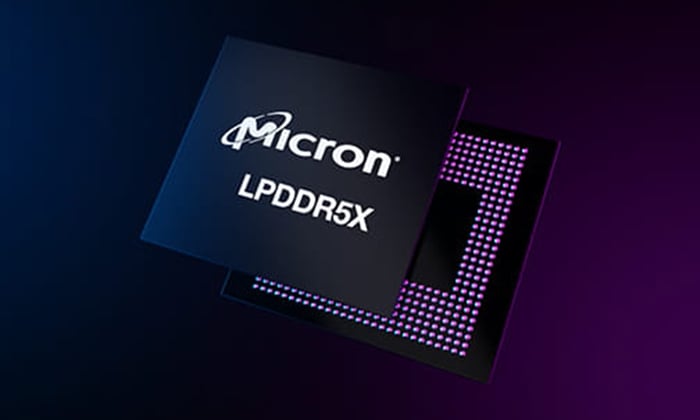Could This Be the Most Underrated AI Infrastructure Play of the Decade?
Key Points
Micron's memory technology is critical to AI.
The company is one of only three major suppliers of high-bandwidth memory.
Micron's valuation doesn't reflect its potential.
- 10 stocks we like better than Micron Technology ›
Which companies immediately come to mind when the topic of artificial intelligence (AI) infrastructure is mentioned? I suspect many would answer Nvidia (NASDAQ: NVDA). Others might think of AI hyperscalers such as CoreWeave (NASDAQ: CRWV).
However, I doubt that Micron Technology (NASDAQ: MU) would be among the top five responses. The memory and storage solutions company arguably deserves more attention than it typically gets. Could Micron even be the most underrated AI infrastructure play of the decade? Here are three reasons why the answer just might be a resounding "yes."
Where to invest $1,000 right now? Our analyst team just revealed what they believe are the 10 best stocks to buy right now, when you join Stock Advisor. See the stocks »

Image source: Micron Technology.
1. Memory is critical to AI
Nvidia's GPUs remain the gold standard for powering AI models. However, these GPUs would be practically useless if they didn't have access to high-bandwidth, low-latency memory. Generative AI and large language models (LLMs) are especially memory-hungry.
But isn't memory essentially a commodity? In the past, it was. However, the picture has changed dramatically thanks to the surging adoption of AI models. Memory chips are now a critical and high-demand part of AI infrastructure.
Jensen Huang, Nvidia's founder and CEO, recently stated that "Micron's leadership in high-performance memory is invaluable to enabling the next generation of AI breakthroughs" that his company is driving. And the mission-critical nature of Micron's memory technology could increase as the focus shifts from training AI models to inference.
2. Micron is a key member of the "memory oligarchy"
It shouldn't be surprising that Huang praised Micron. Neither Nvidia nor AI hyperscalers have many sources to turn to for the memory chips needed to build and deploy AI models.
Micron is a key member of what can correctly be described as a "memory oligarchy," at least when it comes to high-bandwidth memory (HBM). Samsung Electronics (OTC: SSNL.F), SK hynix, and Micron dominate the HBM market. While Samsung and SK hynix are based in South Korea, Micron is the only major U.S. supplier of HBM.
Importantly, Micron is on the ascent within this exclusive group. Over the last year, the company has vaulted past Samsung to become the second-largest HBM supplier after SK hynix. Micron now claims a market share of 21%. It has achieved this remarkable success in large part because of the impressive capabilities of its HBM3E HBM, which Micron bills as "the fastest, highest-capacity high-bandwidth memory to advance AI innovation."
3. Micron's valuation doesn't reflect its potential
While I've hopefully built the case for Micron's significant role in AI, I haven't yet explained why the company is arguably the most underrated AI infrastructure play of the decade. This is where valuation takes center stage.
Nvidia's forward price-to-earnings (P/E) ratio is roughly 30. Fellow chipmaker Advanced Micro Devices' (NASDAQ: AMD) forward earnings multiple isn't too far behind at 28.6. AI accelerator leader Broadcom's (NASDAQ: AVGO) shares trade at a lofty 36.8 times forward earnings.
What about the AI hyperscalers? CoreWeave isn't profitable yet, so earnings-based metrics must be tossed out the window. However, its trailing 12-month price-to-sales ratio tops 19. Nebius Group (NASDAQ: NBIS) stock trades at a nosebleed 114.5 times sales.
We've seen how critical memory is for AI models. We've established that Micron is one of only three major sources for HBM. So how does its valuation stack up against these other AI infrastructure players? Micron's forward P/E ratio is... 12.3. And that low multiple comes after the company's share price has skyrocketed 140% this year. Notably, Micron is cheaper than Samsung Electronics -- the company it has eclipsed in the HBM market.
I think that Micron is valued based on the historical background of the memory industry rather than its future prospects with the AI boom. Does this make the stock the most underrated AI infrastructure play of the decade? Micron definitely ranks as one of the top contenders, in my opinion.
Should you invest $1,000 in Micron Technology right now?
Before you buy stock in Micron Technology, consider this:
The Motley Fool Stock Advisor analyst team just identified what they believe are the 10 best stocks for investors to buy now… and Micron Technology wasn’t one of them. The 10 stocks that made the cut could produce monster returns in the coming years.
Consider when Netflix made this list on December 17, 2004... if you invested $1,000 at the time of our recommendation, you’d have $669,449!* Or when Nvidia made this list on April 15, 2005... if you invested $1,000 at the time of our recommendation, you’d have $1,110,486!*
Now, it’s worth noting Stock Advisor’s total average return is 1,076% — a market-crushing outperformance compared to 191% for the S&P 500. Don’t miss out on the latest top 10 list, available when you join Stock Advisor.
See the 10 stocks »
*Stock Advisor returns as of October 20, 2025
Keith Speights has no position in any of the stocks mentioned. The Motley Fool has positions in and recommends Advanced Micro Devices and Nvidia. The Motley Fool recommends Broadcom and Nebius Group. The Motley Fool has a disclosure policy.



